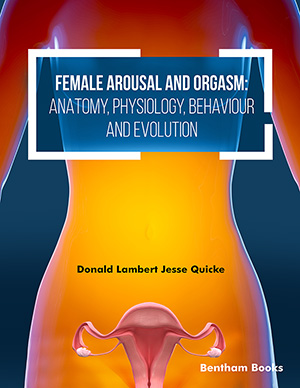Abstract
Background: Among First Nations adults living in OECD nations bronchiectasis appears at a particularly heightened rate, due to high childhood incidence, and high prevalence of associated risk factors. To date, however, the extent of the bronchiectasis disease burden among adult First Nations people has not been formally assessed.
Methods: Two databases (Pubmed and Scopus) were reviewed for English literature published from January 2000 to March 2022 pertaining to bronchiectasis among adult First Nations indigenous people residing in OECD nations. All studies that reported on prevalence, incidence, or outcomes (i.e., hospitalisations, mortality) directly associated with bronchiectasis were included. Studies that did not provide indigenous specific, bronchiectasis specific data, or were paediatric studies were excluded. Participant numbers and demographics, bronchiectasis prevalence or incidence, respiratory comorbidities and outcomes including mortality, hospitalisations or univariate or multivariate modelling to describe the risk of bronchiectasis and outcomes were tabulated.
Results: Twenty-five studies were included, drawn from Australia (n=16), New Zealand (n=7) and North America (n=1), with most studies (n=21) reporting on referred populations. A median number of participants was 241 (range 31 to 1765) (excluding nationwide hospitalisation datasets (n=3)) with a mean age of 48.4 years, and 55% females. The hospital admission rate for bronchiectasis was 3.5x to 5x higher among Māori compared to non-Māori New Zealanders, and 5x higher in indigenous compared to non-indigenous Australians. Mortality ranged from 10 to 56% on follow-up.
Conclusion: Bronchiectasis disease burden is higher among adult First Nations indigenous populations, presenting earlier with high mortality and hospitalisation rate. Further studies are required to address this inequality.
Keywords: Aboriginal, chronic obstructive pulmonary disease, bronchiectasis disease, pathogenesis, mucous production, HRCT, LRTI’s.
[http://dx.doi.org/10.1016/S0140-6736(16)00345-7] [PMID: 27108232]
[http://dx.doi.org/10.2147/COPD.S6133] [PMID: 20037680]
[http://dx.doi.org/10.5694/j.1326-5377.2008.tb02085.x] [PMID: 18837683]
[http://dx.doi.org/10.1186/s12890-018-0638-0] [PMID: 29788932]
[http://dx.doi.org/10.5694/mja17.01195] [PMID: 30107772]
[PMID: 23145413]
[http://dx.doi.org/10.5694/j.1326-5377.2010.tb03949.x] [PMID: 20854242]
[http://dx.doi.org/10.5694/mja14.00287] [PMID: 25588439]
[http://dx.doi.org/10.5694/j.1326-5377.2002.tb04733.x] [PMID: 12175325]
[http://dx.doi.org/10.1080/22423982.2020.1731059] [PMID: 32090714]
[http://dx.doi.org/10.3389/fped.2017.00027] [PMID: 28265556]
[http://dx.doi.org/10.1542/peds.109.2.210] [PMID: 11826197]
[http://dx.doi.org/10.1093/ije/26.4.797] [PMID: 9279612]
[http://dx.doi.org/10.1016/j.rmed.2007.11.007] [PMID: 18086522]
[http://dx.doi.org/10.2174/157339609791317342]
[http://dx.doi.org/10.3389/fped.2015.00009] [PMID: 25741502]
[http://dx.doi.org/10.1371/journal.pone.0070478] [PMID: 23940582]
[http://dx.doi.org/10.1136/adc.2004.066472] [PMID: 15871981]
[http://dx.doi.org/10.1111/imj.13739] [PMID: 29345411]
[http://dx.doi.org/10.1111/j.1445-5994.2011.02444.x] [PMID: 21299784]
[PMID: 26370753]
[http://dx.doi.org/10.1111/cei.13595] [PMID: 33755987]
[http://dx.doi.org/10.1111/resp.13280] [PMID: 29502335]
[http://dx.doi.org/10.1111/imj.14718] [PMID: 31841252]
[http://dx.doi.org/10.2147/COPD.S213947] [PMID: 31576117]
[http://dx.doi.org/10.22605/RRH6390] [PMID: 33836129]
[http://dx.doi.org/10.1111/1754-9485.13295] [PMID: 34313002]
[http://dx.doi.org/10.1111/ajr.12349] [PMID: 28618108]
[http://dx.doi.org/10.1080/17476348.2021.1928496] [PMID: 33985393]
[http://dx.doi.org/10.2147/COPD.S328137] [PMID: 34616149]
[http://dx.doi.org/10.1007/s00408-021-00453-7] [PMID: 34218310]
[http://dx.doi.org/10.1111/ajr.12411] [PMID: 29573520]
[http://dx.doi.org/10.1371/journal.pntd.0002643] [PMID: 24454973]
[http://dx.doi.org/10.1093/cid/cir766] [PMID: 22095566]
[http://dx.doi.org/10.1093/ofid/ofu023] [PMID: 25734096]
[http://dx.doi.org/10.1371/journal.pntd.0006281] [PMID: 29529032]
[http://dx.doi.org/10.1183/23120541.00001-2019] [PMID: 31911928]
[http://dx.doi.org/10.1093/cid/ciaa1401] [PMID: 32936911]
[http://dx.doi.org/10.1080/00039896.1968.10665274] [PMID: 5687553]
[http://dx.doi.org/10.1513/AnnalsATS.201406-257OC] [PMID: 25496305]
[http://dx.doi.org/10.1111/ajr.12782] [PMID: 34514667]
[http://dx.doi.org/10.1002/(SICI)1099-0496(200003)29:3<182:AID-PPUL5>3.0.CO;2-T] [PMID: 10686038]
[http://dx.doi.org/10.1002/ppul.24174] [PMID: 30325109]
[http://dx.doi.org/10.3402/ijch.v74.29256] [PMID: 26547082]
[PMID: 23904781]
[http://dx.doi.org/10.1002/ppul.10289] [PMID: 12746947]
[http://dx.doi.org/10.1093/infdis/170.2.368] [PMID: 8035023]
[PMID: 11450280]
[http://dx.doi.org/10.1542/peds.2004-0049] [PMID: 15466069]
[http://dx.doi.org/10.1371/journal.pone.0231798] [PMID: 32302359]
[http://dx.doi.org/10.1371/journal.pone.0058231] [PMID: 23469270]
[http://dx.doi.org/10.1186/s12873-022-00570-3] [PMID: 35045817]
[http://dx.doi.org/10.1111/j.1440-1584.2006.00804.x] [PMID: 17032292]
[http://dx.doi.org/10.1503/cmaj.061574] [PMID: 17638953]
[http://dx.doi.org/10.1002/ppul.23380] [PMID: 26840008]
[http://dx.doi.org/10.21037/jtd.2018.04.134] [PMID: 29997923]
[http://dx.doi.org/10.1111/resp.13509] [PMID: 30801930]
[http://dx.doi.org/10.1016/S0140-6736(18)31767-7] [PMID: 30215383]
[http://dx.doi.org/10.1371/journal.pone.0263744] [PMID: 35134094]
[http://dx.doi.org/10.1136/bmjresp-2021-001135] [PMID: 34952866]
[http://dx.doi.org/10.1080/17476348.2021.1847649] [PMID: 33166208]
[http://dx.doi.org/10.2147/COPD.S361839] [PMID: 35480554]
[http://dx.doi.org/10.2147/JAA.S376213] [PMID: 36132978]
[http://dx.doi.org/10.1016/j.rmed.2020.105940] [PMID: 32250872]































